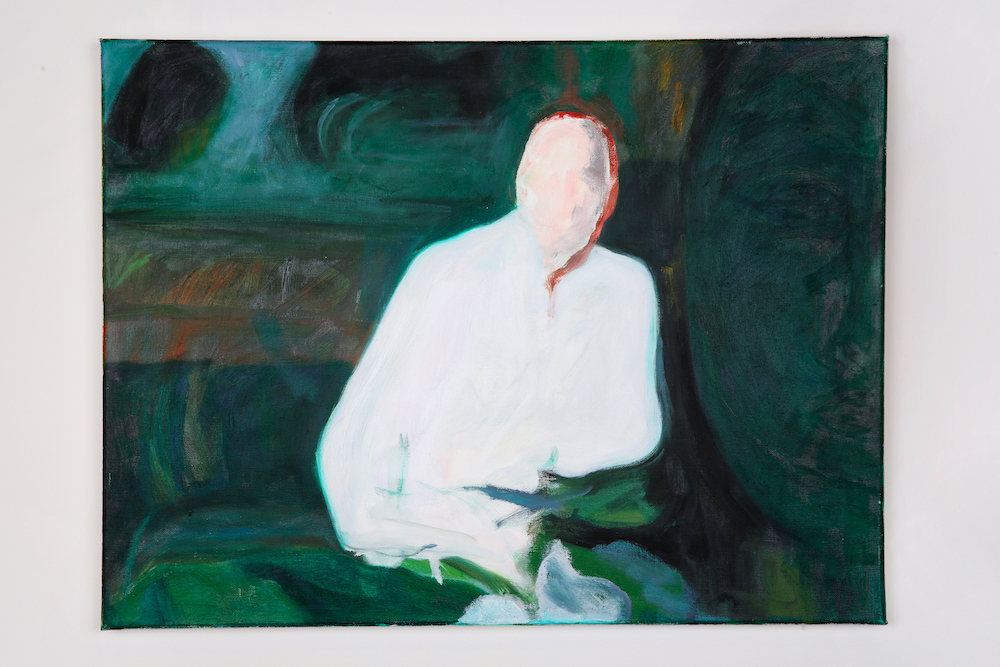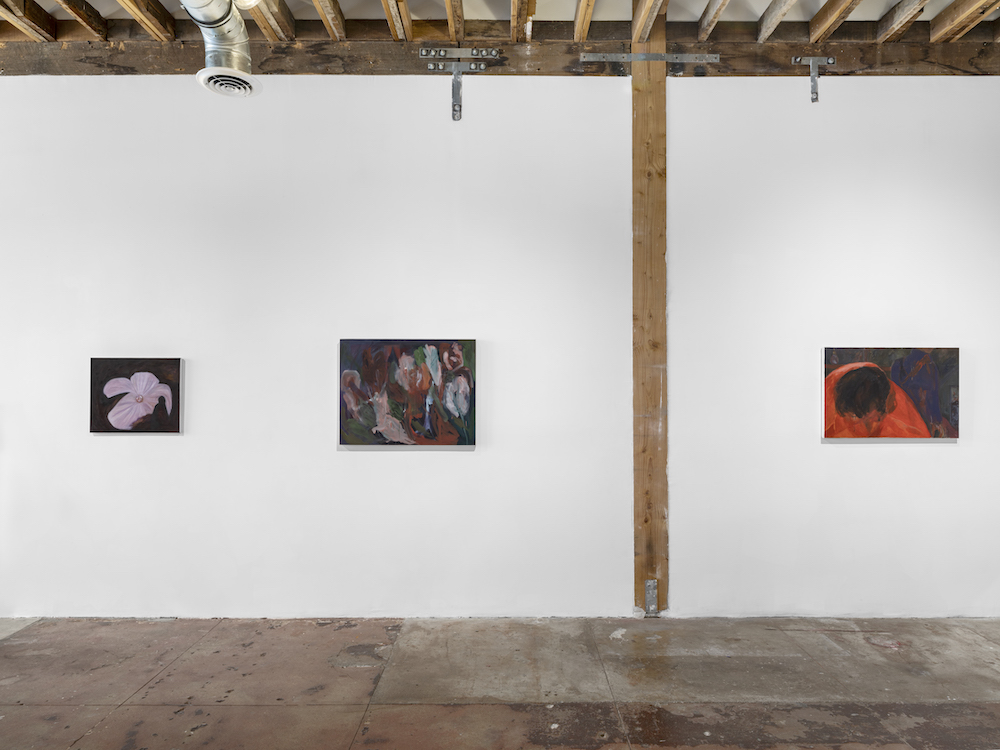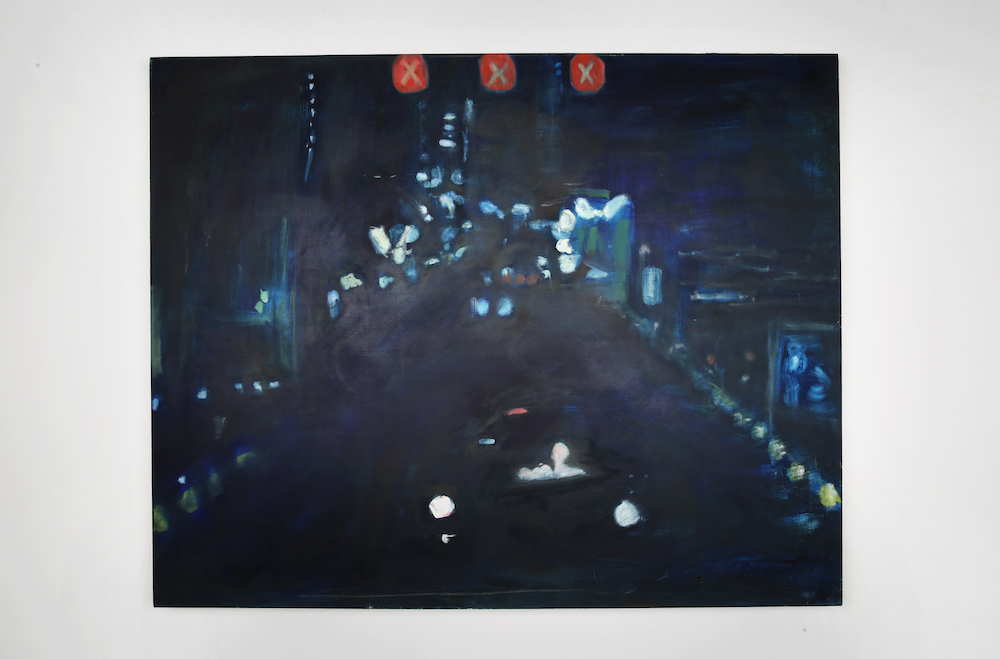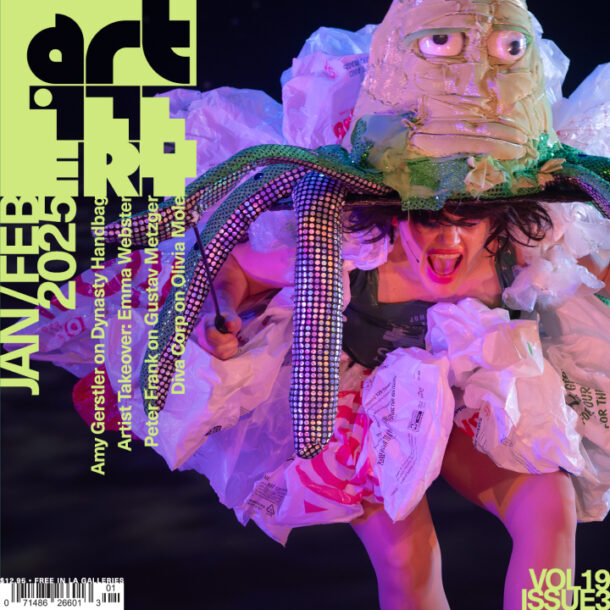There is something a little chipper about the art world right now that belies the national mood. Palettes tend toward cheery hues and uncomplicated content. Not that there’s anything wrong with upbeat paintings, it just seems like there are other types of content worth exploring that the market discourages. We all enjoy a hint or more of darkness, whether it’s horror movies, Goth music, or what have you. It’s just a harder sell when the commodity in question is going to hang in your living room.
In this regard, Xiao He’s “A Whole Night” is somewhat refreshing, not that these would not look great in your house (it’s just a matter of which house, perhaps—say, do you own candelabras?) These paintings have an air of melancholy, mystery, and darkness which draws you in without answering all of your questions. Their bleak charm recalls nineteenth-century painting. My all-time favorite alcoholic short king, Toulouse-Lautrec, comes to mind. Another interesting symmetry, Toulouse-Lautrec’s immersive slice-of-life barroom scenes anticipate film, and some of He’s paintings are painted from film stills.
Take Le Consentement (2024), for instance; it depicts a faceless female figure—suggesting disassociation or a loss of identity—against a murky background. The source for the still is the 2023 French film Le Consentement, co-written by Vanessa Springora, about the sexual abuse she experienced beginning at age fourteen from author Gabriel Matzneff (then 49). Matzneff wrote openly about raping young boys and girls and was defended by the French literary establishment. Yikes! All of this is horrifying, and the painting is a dark reminder of how it is nothing new for the cultural establishment—even ostensibly liberal institutions (ahem, Democrats…)—to condone unspeakable evils. The most enlightened among us might not want this on our walls even if the daily news cycle reminds us of this dynamic constantly.

Xiao He, Le Consentement, 2024.
Like many of these paintings, this one is an interpretation of a film still and retains a cinematic quality—not just in terms of horizontal composition but in how it hints at narrative and atmosphere. They suggest a moody background score, a sonic accompaniment which might be austere chamber music or a Chopin nocturne—not what one usually intuits from contemporary paintings, which tend to convey more pleasant lifestyle content: flowers, succulents, anodyne portraiture, and middle-class interiors come to mind, for instance.
He’s approach to each work is driven by concerns of narrative and content rather than just the formal trajectory of her painting practice. This stands in stark contrast to a lot of art in which the same subjects or abstract motifs are recapitulated ad nauseam. The result is a refreshing variety of subjects and a series of distinct paintings, each of which feels like a fresh, independent attempt at making art. Her painterly chops are confident but worn lightly. She is not, thankfully, trying to impress anyone. Moonlight (2024), for instance, depicts a crescent moon above scraggly tree limbs. The modulation of dark skies between two hues, a dark Phthalo blue and a deep purple-ish crimson, conveys, as much as it depicts, the moodiness of a night sky.
An earlier work, Sunbathing (2024), is stylistically an outlier. The surrealistic distortions of a fleshy abstract female figure recall Maria Lassnig. This work is fairly frontal, filled with surface effects, flat space, and fleshtones which connote the feeling of flesh as much as its appearance. The cadmium orange nipple evokes corporeality and sensory stimulation more than it resembles an areola. In The Bride (2024), a hulking orange mass with brown hair draped over it feels like being too drunk and hunched over a bar table. The space is more recessive and representational than Sunbathing, but the sense of form capturing internal experience rather than modeling appearances is similar. On the other hand, Yi Yi (2025), a painting of a dark figure against doodly pink abstract clouds, feels like a cartoon version of what she achieves elsewhere with more specificity.

Xiao He, “A Whole Night,” installation view, 2025. Photo: ofstudio. Courtesy of Reisig and Taylor Contemporary.
The titular work, A Whole Night (2025), depicts a city street at night and feels cinematic because this type of image is more familiar in film. In this case, it was inspired by a shot from Chantal Akerman’s Toute une nuit (1982). The bright highlights, in broad light brushy marks, could be a cheap painterly trick—as in a kitsch print of Times Square at night—but the light touch conveys care and hesitancy. It captures the dinginess of late-night streets and dismal outdoor illuminations rather than turning it into a glinting spectacle.
Like the aforementioned Toulouse-Lautrec, the unfussy attention to painterly effects extends into the backgrounds. These can be as captivating as the foreground with a sensitivity of touch and slight coloristic modulations—like the warm brown submerged in tenebrous blacks in The Spectator, depicting a single flower. These moments, to extend the cinematic analogy, can feel like a supporting actor stealing the show.
Xiao He: A Whole Night
Reisig and Taylor Contemporary
4478 W. Adams Blvd.,
Los Angeles, CA 90016
March 8 – April 12, 2025


